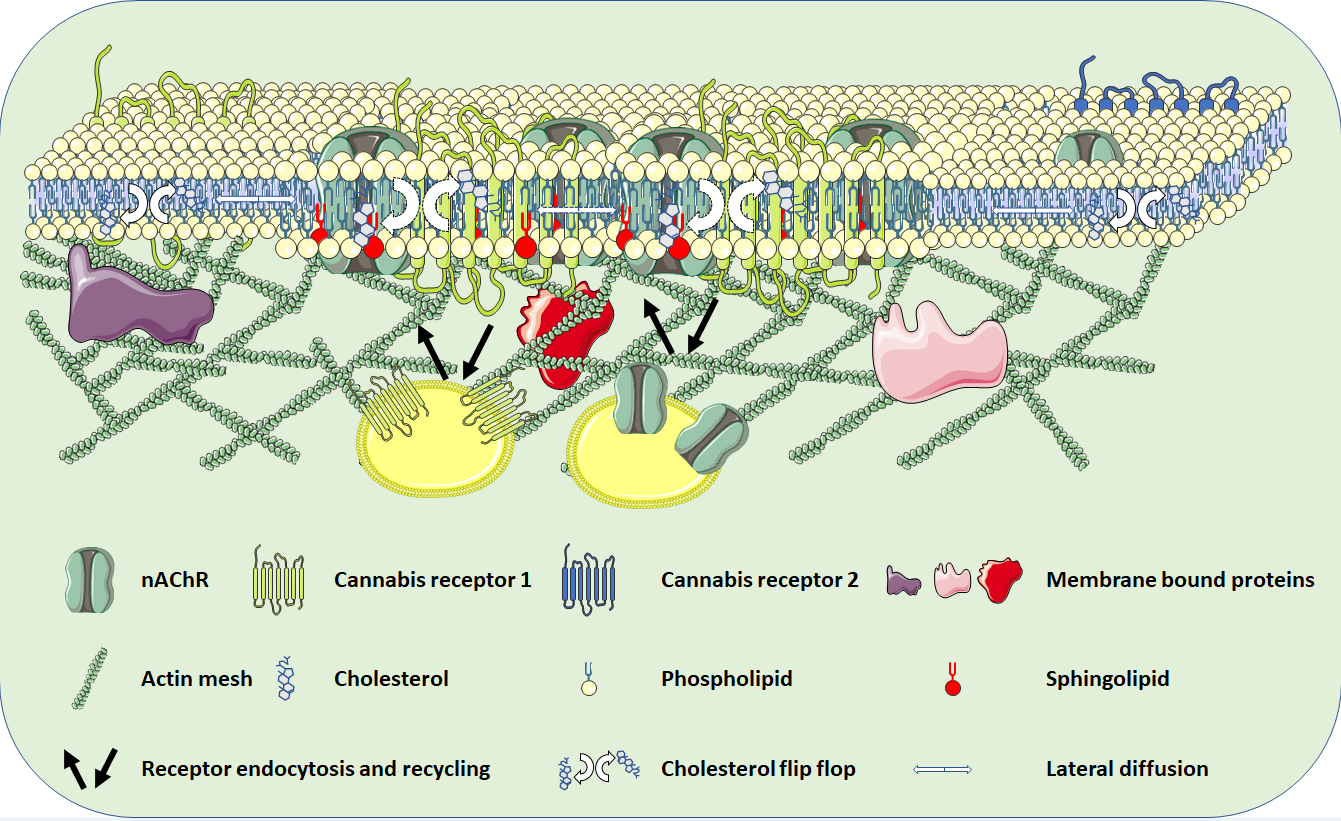Fifty years on from the classical fluid-mosaic model of Singer and Nicolson, current views of the plasma membrane portray a much more complex view of this interface region. Compartmentalization, together with transbilayer and lateral asymmetries, provide the structural foundation for functional specializations at the cell surface, including the active role of the lipid microenvironment in the modulation of membrane-bound proteins. The chemical synapse, the site where neurotransmitter-coded signals are decoded by neurotransmitter receptors, adds another layer of complexity to the plasma membrane architectural intricacy, mainly due to the need to accommodate a sizeable number of molecules in a minute subcellular compartment with dimensions barely reaching the micrometer. In this review, we discuss how Nature has developed suitable adjustments to accommodate different types of membrane-bound receptors and scaffolding proteins via membrane microdomains, and how this “efford-sharing” mechanism has evolved to optimize crosstalk or separation or coupling where/when appropriate. To this end, we use a fast ligand-gated neurotransmitter receptor, the nicotinic acetylcholine receptor, and a second-messenger G-protein coupled receptor, the cannabinoid receptor, as paradigmatic example.

